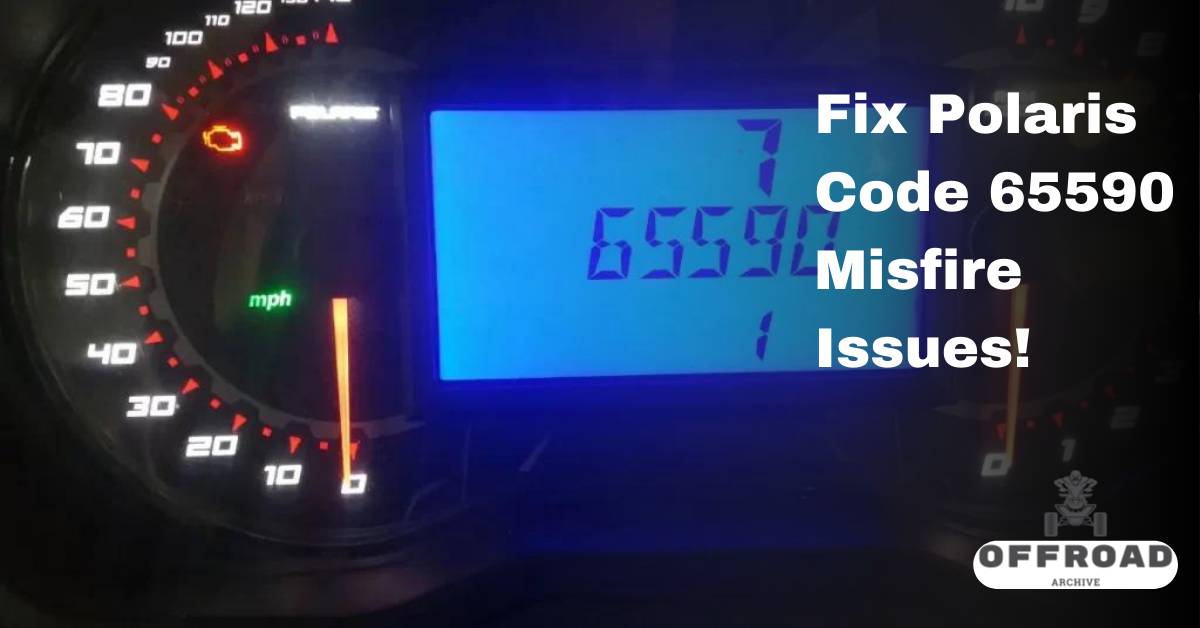Polaris vehicles are widely recognized for their reliability and performance. However, many Polaris owners face a common issue of their vehicles going into limp mode and displaying misfire codes 65590, 65591, and/or 65592. This problem can be caused by various factors, including belt slipping, clutch problems, ignition-related issues, and valve-related issues.
In this article, we will explore the causes of Polaris Code 65590 misfire issues and provide solutions to fix them. By understanding the underlying causes and implementing the appropriate solutions, Polaris owners can ensure that their vehicles perform at their optimal levels and avoid any potential issues that may arise due to misfires.
We aim to provide a technical and objective analysis of the issue while also presenting it in an engaging manner to serve the needs of our audience.
Table of Contents
Key Takeaways
- Polaris Code 65590 is a misfire code that can be caused by issues with the belt, clutch system, ignition, valves, or fuel tank.
- The misfire code is usually accompanied by the vehicle going into limp mode and bogging down.
- Inspecting the belt, clutch system, spark plugs, fuel injector, fuel pump, and valves can help identify and overcome these issues.
- Using Gilomen Innovations tuning is highly recommended for eliminating this misfiring issue.
Causes of Polaris Code 65590 Misfire Issues
Misfire codes such as Polaris Code 65590 are often caused by various factors that affect the engine’s performance. Diagnosing misfire symptoms requires a thorough understanding of the different issues that could cause it.
Belt slipping, clutch issues, gear reduction, tire size changes, ignition-related issues, valve-related issues, and water accumulation in the fuel tank are all common culprits. Troubleshooting Polaris engine issues can be time-consuming and frustrating, but it is essential to identify the root cause of the misfire.
Belt-related misfires are the most common cause of a misfire code, with clutch-related misfires and belt issues following closely. Ignition-related misfires can also occur due to spark plugs, spark plug wires, a faulty fuel injector, or a faulty fuel pump. Valve-related misfires are less common but can still cause problems.
Water accumulation in the fuel tank is another issue that can cause misfires, especially if the fuel has been sitting for an extended period.
Also Read:
- Discovering The Polaris Magnum 330 Review
- Discover The Coleman 400 UTV Review
- Fix Honda Pioneer 1000 Problems With These Solutions!
- Dodge Ram Trailer Wiring: Cracking The Color Code!
Identifying the Issue

One potential source of engine malfunction in Polaris vehicles can be compared to a clogged pipe, where grit and grime buildup in the clutch system can restrict proper function. A dirty or worn clutch system can cause a fluctuation in RPMs, leading to misfire codes and the vehicle going into limp mode. It is essential to inspect the clutch system regularly to ensure that it is operating correctly.
Spyder rollers should be checked for wear and replaced if necessary. The primary clutch should be torqued to the correct specifications, and the clutch system should be kept clean to prevent the buildup of dirt and grime.
In addition to the clutch system, other potential causes of misfire codes should be inspected. Spark plugs should be checked for wear and replaced if necessary. A faulty fuel injector or fuel pump can cause ignition-related misfires, so it is essential to test these parts to ensure that they are functioning correctly.
The fuel injector can be tested by removing it from the vehicle and checking its spray pattern. The fuel pump can be tested by removing the fuel line and turning on the ignition to check for proper fuel flow.
By inspecting the clutch system, spark plugs, and fuel system, potential misfire issues can be identified and addressed to keep the Polaris vehicle running smoothly.
Solutions and Prevention
Inspecting and maintaining the clutch system, spark plugs, and fuel system can prevent potential engine malfunctions and ensure the proper function of the Polaris vehicle.
Regular inspections of the clutch system can identify worn or damaged parts, such as spyder rollers, which can cause misfires. Proper torque of the primary clutch and cleaning the clutch system of grit and grime can also prevent slipping and misfiring.
Additionally, checking and replacing worn spark plugs can prevent ignition-related misfires. Testing the fuel injector and pump can also identify potential issues and prevent misfires. Ensuring that the fuel tank is free of water accumulation by not using ethanol-based fuel and not letting fuel sit for extended periods of time can also prevent misfires.
Preventative measures can also be taken to avoid misfires. Regular maintenance, such as oil changes, can prevent belt-related misfires by ensuring the belt is not damaged or worn. Using aftermarket tuning from companies such as Gilomen Innovations can also prevent misfires by addressing specific fault codes and optimizing the vehicle’s performance.
In addition, avoiding modifications to the clutch system, gear reduction, and tire size changes can prevent RPM fluctuations and misfires. Troubleshooting tips, such as checking for error codes, monitoring RPMs, and listening for abnormal engine sounds, can also aid in identifying and preventing misfires.
Overall, regular inspections and preventative measures can ensure the proper function of the Polaris vehicle and prevent potential engine malfunctions.
Frequently Asked Questions
Can using non-ethanol fuel prevent water accumulation in the fuel tank and therefore prevent misfires?
Using ethanol-free fuel can potentially prevent water accumulation in the fuel tank, which can contribute to ignition-related misfires. However, it is important to regularly inspect and maintain the vehicle’s belt, clutch system, spark plugs, fuel injector, and fuel pump to prevent misfires.
Are there any other symptoms besides the vehicle going into limp mode and bogging down that can indicate a misfire issue?
Symptoms of a misfire issue include loss of power, rough idling, and difficulty starting. Timely diagnosis is crucial as it can prevent further damage to the engine. Regular maintenance and inspection can help identify and overcome these issues.
How often should the belt, clutch system, spark plugs, fuel injector, fuel pump, and valves be inspected to prevent misfire issues?
Regular maintenance of the belt, clutch system, spark plugs, fuel injector, fuel pump, and valves is crucial to prevent misfire issues. Professional inspection is recommended annually or after any modifications to the vehicle.
Can misfire issues be prevented by regularly cleaning the clutch system and replacing spyder rollers?
Regular maintenance of the clutch system, including cleaning and replacing spyder rollers, can help prevent misfire issues. Performance upgrades, such as tuning by Gilomen Innovations, can also improve overall engine performance and reduce the likelihood of misfires.
Are there any other tuning options besides Gilomen Innovations that can help eliminate misfire issues?
Performance upgrades can be a solution to eliminate Polaris Code 65590 misfire issues. Other tuning options include Dynojet Power Vision and Bikeman Performance. These upgrades can provide better fuel management and ignition timing, resulting in improved performance and a reduction in misfires.


2 thoughts on “Fix Polaris Code 65590 Misfire Issues!”